Explore the ancient Egyptian lotus flower's profound influence on creation myths, art, and architecture. Discover how this iconic symbol embodied purity, rebirth, and eternal life, playing a pivotal role in Egypt's spiritual beliefs and cultural identity.

The Lotus Flower has always captured the essence of ancient Egypt’s cultural, spiritual, and aesthetic sophistication as vividly as the lotus. Since its discovery, it has transformed into one of the most popular ancient Egyptian symbols worldwide. Growing from the fertile mud of the Nile’s floodplains and unfolding its pristine petals at dawn, this remarkable plant influenced every aspect of Egyptian life, from their myths of cosmic beginnings to the design of their grand temples.
Associated with Ancient Egyptian Gods and Goddesses like Nefertem, depicted in funerary art and temple reliefs, and reflected in their healing rituals and fragrant perfumes, the lotus stood for purity, creation, and renewal. Its cyclical blooming and enduring beauty resonated with the Egyptians’ understanding of the natural world and served as a potent symbol of the soul’s rebirth, the kingdom’s prosperity, and the eternal rhythms that shaped their universe.
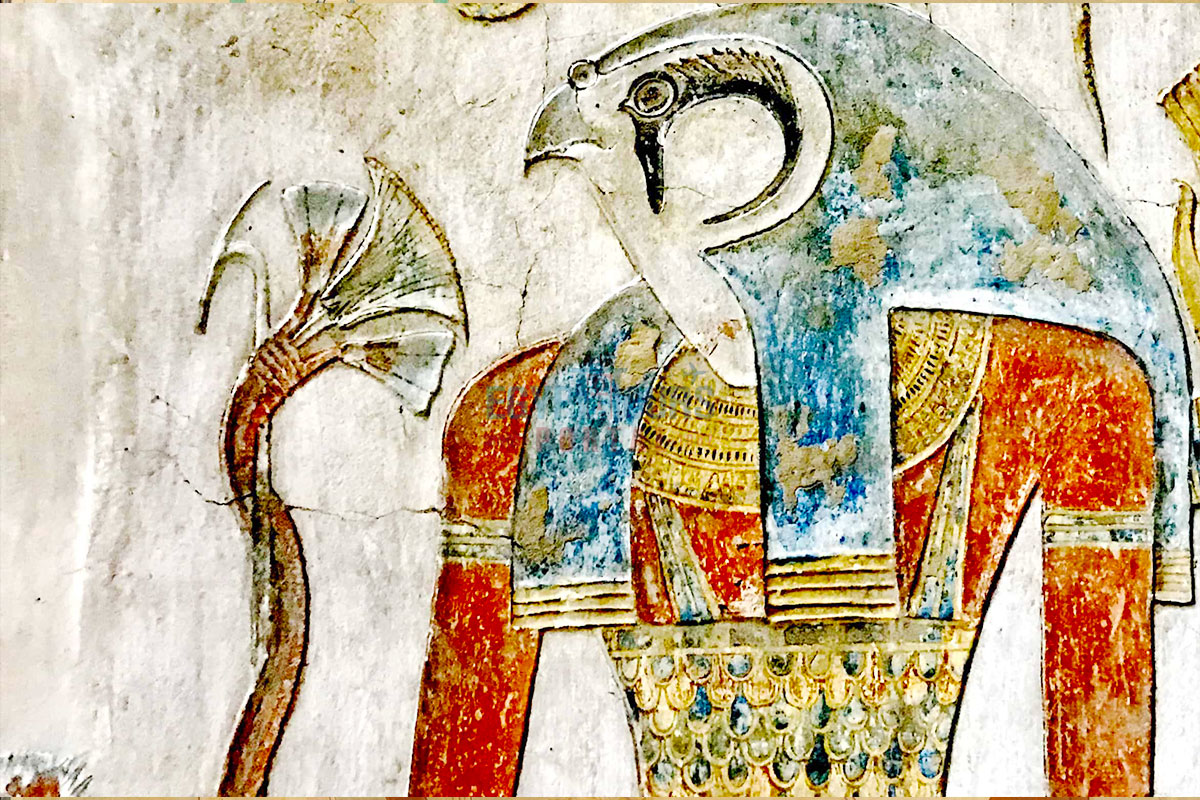
The importance of the lotus can be traced back to the Early Dynastic Period (c. 3100–2686 BCE), although it likely held meaning even in pre-dynastic times. In the Hermopolitan creation myth, recorded as early as the Middle Kingdom (c. 2055–1650 BCE), the sun god emerged from a lotus rising from the primordial waters of Nun.
This narrative closely mirrors the flower’s daily blooming cycle and situates the lotus as a vivid metaphor for the birth of the cosmos and the continual process of resurrection. During the New Kingdom (c. 1550–1070 BCE), when Egyptian religion and mythology were extensively codified in temple inscriptions and funerary texts, the lotus’s role as a creation symbol became more clearly articulated.
Explore exquisite details about the beliefs and aura of the religion of the ancient Egyptians.
Read MoreNefertem, a deity associated with healing, beauty, and the rejuvenating scent of the lotus, appears in texts and imagery as early as the Old Kingdom (c. 2686–2181 BCE). He is often shown as a young man with a lotus blossom—sometimes flanked by two tall plumes—on his head. By the time of the New Kingdom, Nefertem’s iconography was firmly established, appearing on temple reliefs, amulets, and stelae. Moreover, the portrayal of gods like Horus or Ra as children emerging from a lotus in tomb reliefs and temple murals (notably those from the period of the 18th Dynasty, c. 1550–1292 BCE) reinforced the flower’s divine and regenerative attributes.
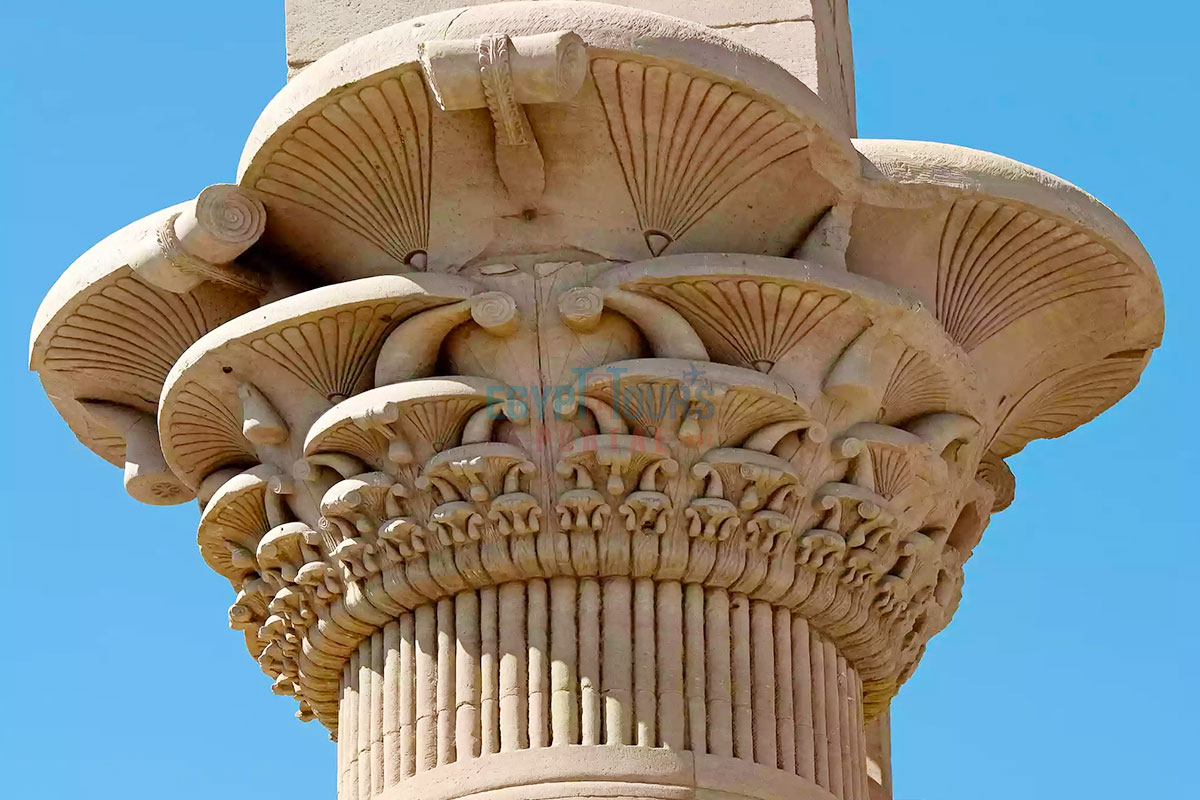
Lotus imagery appears prominently in all of the art of ancient Egypt, especially in tomb paintings of the New Kingdom. For example, in the tomb of Nebamun (c. 1350 BCE), scenes depict banquet guests holding and inhaling lotus blossoms, symbolizing pleasure, rebirth, and participation in the eternal cycle of life. Archaeologists have also discovered dried lotus flowers in the burial chambers of pharaohs, including those from the reign of Ramesses II (1279–1213 BCE), suggesting that the flower was integral to funerary rituals and beliefs about the afterlife.
Lotus motifs influenced architectural styles throughout Egypt’s long history. The use of lotus-bud and lotus-blossom capitals on columns dates back to at least the Old Kingdom’s Pyramid Age, though they became particularly elaborated in the New Kingdom temples of Karnak and Luxor (c. 1550–1069 BCE).
At Karnak, which underwent significant construction phases during the Middle and New Kingdoms (with major expansions under Hatshepsut, Thutmose III, and Ramesses II in the 15th–13th centuries BCE), these floral capitals contributed to the temple’s symbolic representation of a primeval marsh. The columns helped transform the sacred precincts into a microcosm of the Egyptian cosmos, reflecting the primordial waters from which both the lotus and life itself emerged.
Witness the mesmerizing details about the creativity and meaning behind the ancient Egyptian architecture.
Read More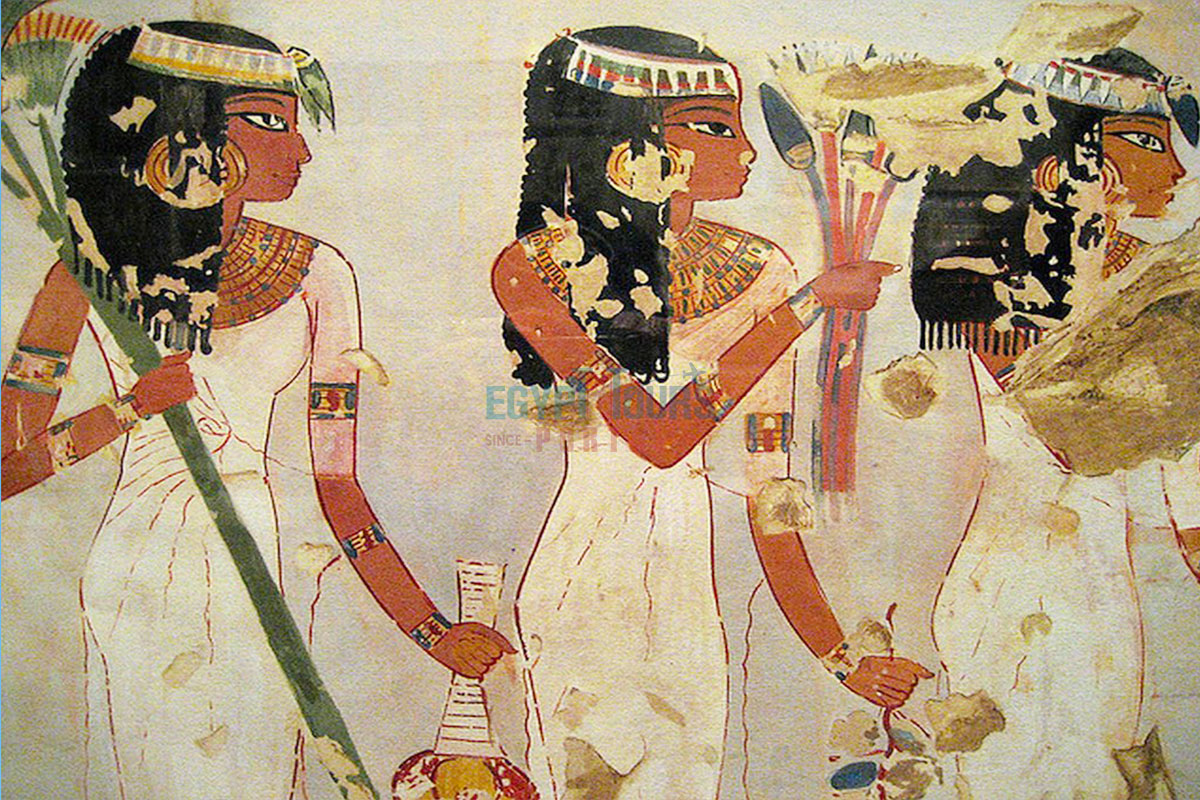
Although detailed medical texts like the Edwin Smith Papyrus and the Ebers Papyrus (c. 1550 BCE) focus more on a range of herbal medicines rather than specifically on the lotus, it is plausible that certain parts of the plant were employed for their scent or mild therapeutic qualities. By the Late Period (c. 664–332 BCE), references to exotic botanical imports and fragrant oils in temple inscriptions might suggest that lotus-based substances were included in perfumes or unguents used for health and ceremonial purification.
Learn about the fascinating details about the knowledge and skills of Ancient Egyptian Doctors.
Read MoreLotuses were frequently included in offerings placed before images of gods and deceased ancestors, especially during ancient Egyptian festivals and temple rites. Inscriptions dating from the Ptolemaic Period (332–30 BCE) sometimes mention floral offerings in temple reliefs and dedicatory texts. The lotus’s pleasant fragrance and symbolic resonance with rebirth and purity made it a suitable accompaniment to prayers, chants, and incense-burning rituals that aimed to maintain cosmic order (Maat) and ensure divine favor.
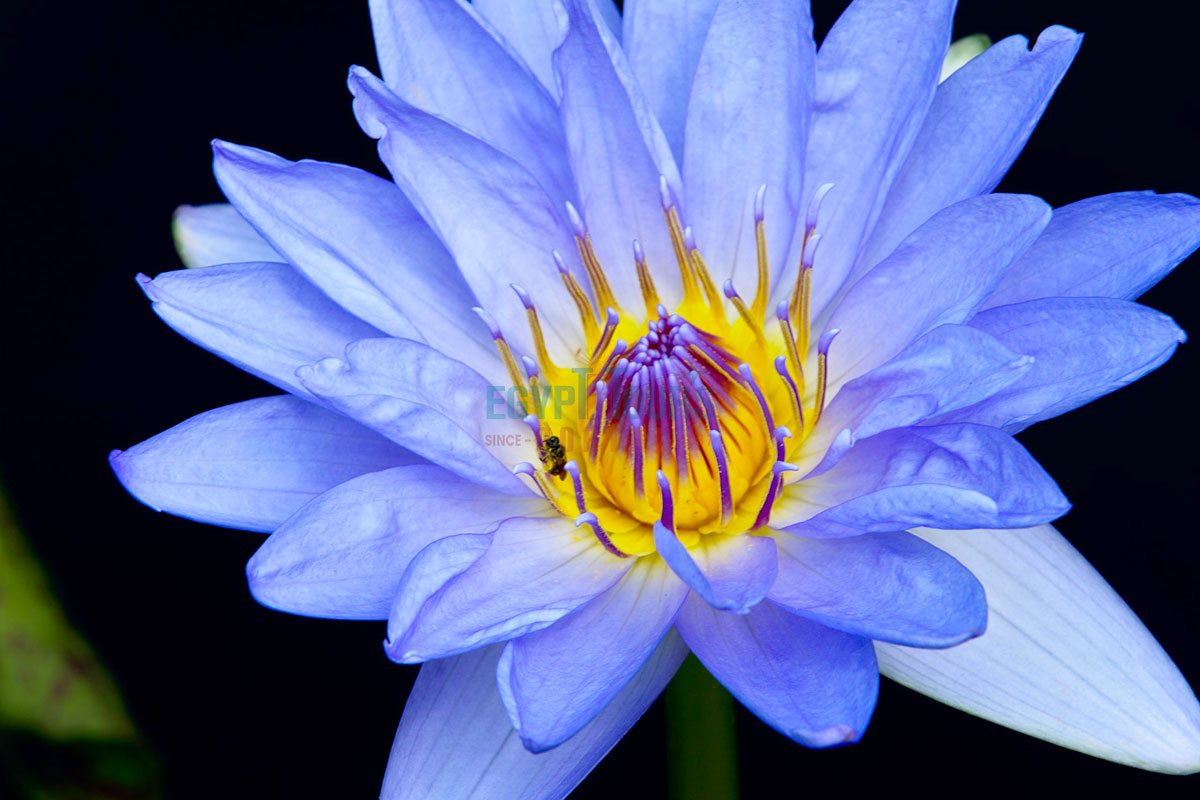
The blue lotus (Nymphaea caerulea) achieved prominence in the New Kingdom (notably between 1500–1100 BCE) as a luxury item in banquets and spiritual ceremonies. While textual evidence of its narcotic or psychoactive use is limited, some scenes from tombs and temples—combined with modern pharmacological research—suggest that infusions or wines steeped with blue lotus might have induced mild euphoria, relaxation, or heightened spiritual awareness. By the Late Period, references to pleasure gardens and sacred lakes in temple precincts, where blue lotus would have flourished, hint at its role in enhancing the religious and sensory environment.
Artifacts such as drinking vessels, jewelry, and cosmetic boxes adorned with blue lotus motifs date back to the Middle Kingdom and become increasingly common in the New Kingdom. The flower’s depiction in literature—poetic love songs from the 19th Dynasty (c. 1292–1189 BCE) mention sweet-smelling flowers—illustrates its entrenched position within Egyptian culture. Over time, blue lotus imagery spread through trade and cultural exchange, influencing Hellenistic and Roman interpretations of Egyptian religious symbolism.
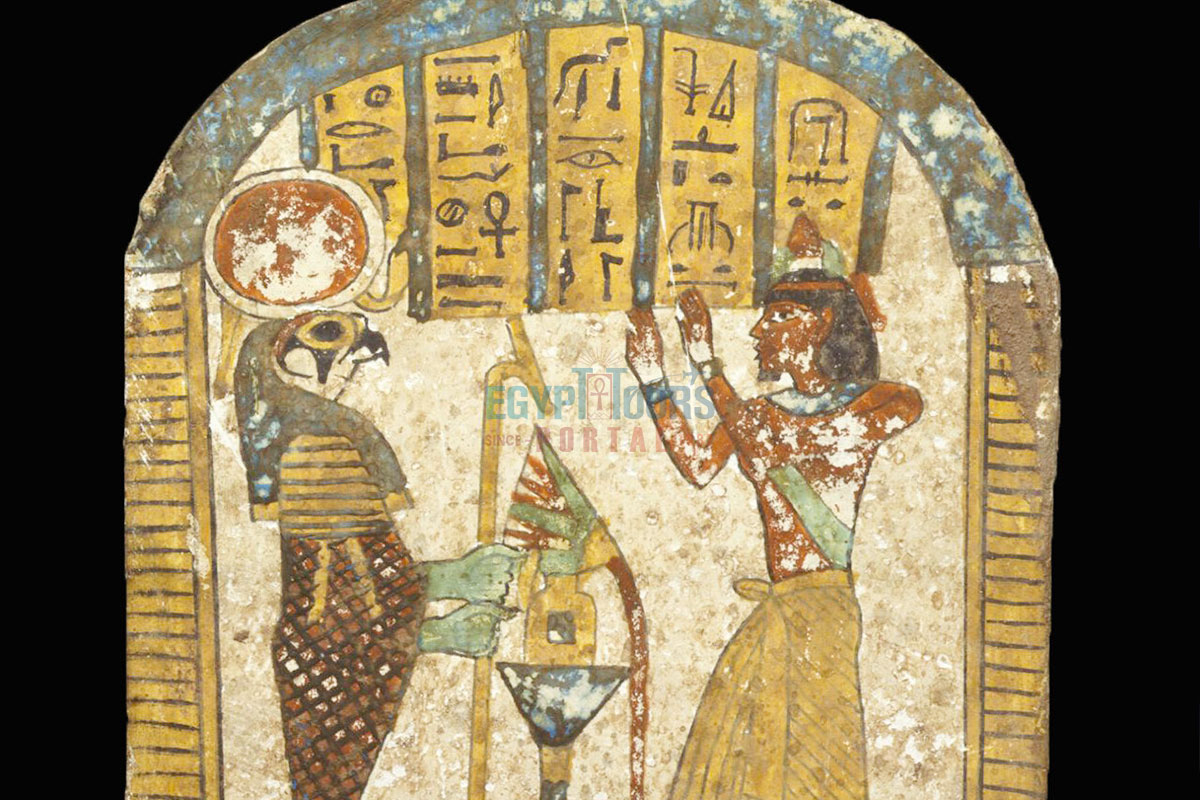
As early as the Old Kingdom, Egyptians would have observed and marveled at the lotus’s behavior—closing at dusk and reopening at dawn. This natural cycle paralleled the sun’s path, making the flower an ideal representation of the continuity of life and renewal. By the time of the Middle Kingdom, when religious texts like the Coffin Texts (c. 2055–1650 BCE) were inscribed, the lotus was already well-established as a symbol of rebirth. It frequently appeared in funerary art, promising the deceased a renewed existence in the afterlife.
Despite its roots in the Nile’s silt and mud, the lotus emerges as a spotless, radiant bloom. Ancient Egyptians living along the river—whose floods and fertile banks had sustained civilization since at least 5000 BCE—saw in the lotus’s immaculate beauty a symbol of moral and spiritual purity. In a society that revered concepts of order, balance, and holiness, the flower’s ability to transcend its murky origin and present a pristine face to the world illustrated a powerful lesson: purity and renewal could arise from chaos and imperfection.
By the Late Period and into the Greco-Roman era, the lotus’s connotations of purity and spiritual enlightenment endured, influencing subsequent cultures that encountered and documented the grandeur and symbolism of ancient Egypt.
The lotus is an immortal and living emblem that bridged the terrestrial and the divine. Through countless dynasties and shifting religious landscapes, the lotus flower’s image and meaning remained constant: it was creation born of darkness, purity born of mud, and life triumphant over death. Whether adorning a temple column, appearing in sacred myths, or drifting gently across a tomb painting, the lotus conveyed a message of hope, spiritual ascension, and eternal rebirth.
Centuries after the last pharaoh’s reign, this timeless bloom continues to inspire awe and respect, reminding us how closely the ancient Egyptians linked the rhythms of nature with the deepest mysteries of existence. Discover the miraculous and healing beauty of Egypt with our epic Egypt tour packages or our marvelous Nile River cruise that will create moments of true wonder.
Private 4 Days Cairo Tour Packages for Indian Travelers 4 days Cairo Egypt Tour pack...
Tour Location: Cairo – Giza...
5 Days Cairo and Alexandria Tour Package For Indian Travelers 5 days Cairo and Alexa...
Tour Location: Cairo/Giza/Alexandria...
6 Days Cairo, Luxor & Aswan Tour Package For Indian Travelers 6 days Cairo, Luxo...
Tour Location: Cairo/Giza/Aswan/Luxor...
Amazing 7 Days Cairo and Hurghada Holiday for Indian Travelers 7 Days Cairo & Hu...
Tour Location: Cairo – Giza – Hurgh...
It Symbolized Creation, Rebirth, Purity, and the Cycle of Life. Its Daily Pattern of Blooming at Sunrise and Closing at Sunset Mirrored the Sun’s Journey and Represented Continuous Renewal.
In Certain Creation Stories, a Lotus Emerged From the Primordial Waters, and From It Arose the First Deity or the Sun God. This Linked the Lotus Directly to the World’s Origin and the Cosmic Order.
Nefertem, often shown wearing a lotus blossom on his head, was closely linked to healing, beauty, and fragrance. Additionally, some portrayals show the child sun god, Ra or Horus, emerging from a lotus, further connecting the flower to divine rebirth and power.
Lotus motifs appeared frequently in tomb paintings, temple carvings, jewelry, and decorative objects. Lotus-bud and lotus-blossom capitals adorned columns, symbolizing the marshy waters of creation and reinforcing spiritual harmony within temple spaces.
Beyond its religious and symbolic significance, the lotus was used decoratively at banquets, included in perfumery, and possibly applied in some medicinal practices. Dried lotus flowers were even placed in tombs as funerary offerings, representing eternal life and resurrection.
The blue lotus (Nymphaea caerulea) was valued for its fragrance and may have had mild psychoactive properties. Ancient Egyptians sometimes steeped it in wine or oils to enhance relaxation and spiritual experiences, integrating it into religious and cultural activities.
Although rooted in the Nile’s silt, it always bloomed above the water’s surface, emerging clean and radiant. This contrast represented moral and spiritual purity arising from the world’s chaos, offering a powerful metaphor for personal transformation and enlightenment.
Yes. Egyptian reverence for the lotus influenced neighboring civilizations and later cultures, which also appreciated its themes of renewal, purity, and spiritual awakening, incorporating these values into their own art, religion, and philosophy.
The entire country of Egypt deserve to be explored with its every heavenly detail but there are places that must be seen before any other such as the breathtaking Hurghada's red sea, The wonders of Cairo the pyramids of Giza, the great sphinx, the Egyptian Museum, Khan El Khalili Bazaar, the wonders of Luxor like Valley of the Kings, Karnak & Hatshepsut temple and the wonders of Aswan such as Abu Simbel temples, Philea temple, Unfinished obelisk and The Wonders of Alexandria like Qaitbat Citadel, Pompey's Pillar and Alexandria Library. Read more about the best places to visit in Egypt.
If you want to apply for a Visa On Arrival that lasts for 30 days then you should be one of the eligible countries, have a valid passport with at least 6 months remaining and pay 25$ USD in cash, as for the E-Visa for 30 day you should have a valid passport for at least 8 months, complete the online application, pay the e-visa fee then print the e-visa to later be presented to the airport border guard. You could also be one of the lucky ones who can obtain a free visa for 90 days. Read more about Egypt travel visa.
Egypt has a variety of delicious cuisines but we recommend “Ful & Ta’meya (Fava Beans and Falafel)”, Mulukhiya, “Koshary”, a traditional Egyptian pasta dish, and Kebab & Kofta, the Egyptian traditional meat dish.
The best time to travel to Egypt is during the winter from September to April as the climate becomes a little tropical accompanied by a magical atmosphere of warm weather with a winter breeze. You will be notified in the week of your trip if the Climate is unsafe and if any changes have been made.
You should pack everything you could ever need in a small bag so you could move easily between your destinations.
We have been creating the finest vacations for more than 20 years around the most majestic destinations in Egypt. Our staff consists of the best operators, guides and drivers who dedicate all of their time & effort to make you have the perfect vacation. All of our tours are customized by Travel, Financial & Time consultants to fit your every possible need during your vacation. It doesn't go without saying that your safety and comfort are our main priority and all of our resources will be directed to provide the finest atmosphere until you return home.
You will feel safe in Egypt as the current atmosphere of the country is quite peaceful after the government took powerful measures like restructuring the entire tourist police to include all the important and tourist attractions in Egypt. Read more about is it safe to travel to Egypt.
Wear whatever feels right and comfortable. It is advised to wear something light and comfortable footwear like a closed-toe shoe to sustain the terrain of Egypt. Put on sun block during your time in Egypt in the summer to protect yourself from the sun.
The best activity is by far boarding a Nile Cruise between Luxor and Aswan or Vise Versa. Witness the beauty of Egypt from a hot balloon or a plane and try all the delicious Egyptian cuisines and drinks plus shopping in old Cairo. Explore the allure and wonders of the red sea in the magical city resorts of Egypt like Hurghada and many more by diving and snorkeling in the marine life or Hurghada. Behold the mesmerizing western desert by a safari trip under the heavenly Egyptian skies.
There are a lot of public holidays in Egypt too many to count either religious or nation, the most important festivals are the holy month of Ramadan which ends with Eid Al Fitr, Christmas and new years eve. Read more about festivals & publich holidays in Egypt.
Egypt is considered to be one of the most liberal Islamic countries but it has become a little bit conservative in the last couple of decades so it is advised to avoid showing your chest, shoulders or legs below the knees.
Arabic is the official language and Most Egyptians, who live in the cities, speak or understand English or at least some English words or phrases. Fewer Egyptians can speak French, Italian, Spanish, and German. Professional tour guides, who work in the tourism sector, are equipped to handle visitors who cannot speak Arabic and they will speak enough English and other languages to fulfill the needs of all our clients.
The fastest way is a car, of course, a taxi. If you are in Cairo ride a white taxi to move faster or you could board the fastest way of transportation in Egypt metro if the roads are in rush hour.
The temperature in Egypt ranges from 37c to 14 c. Summer in Egypt is somehow hot but sometimes it becomes cold at night and winter is cool and mild. The average of low temperatures vary from 9.5 °C in the wintertime to 23 °C in the summertime and the average high temperatures vary from 17 °C in the wintertime to 32 °C in the summertime. The temperature is moderate all along the coasts.
It is the home of everything a traveler might be looking for from amazing historical sites dating to more than 4000 years to enchanting city resorts & beaches. You will live the vacation you deserve as Egypt has everything you could possibly imagine.









